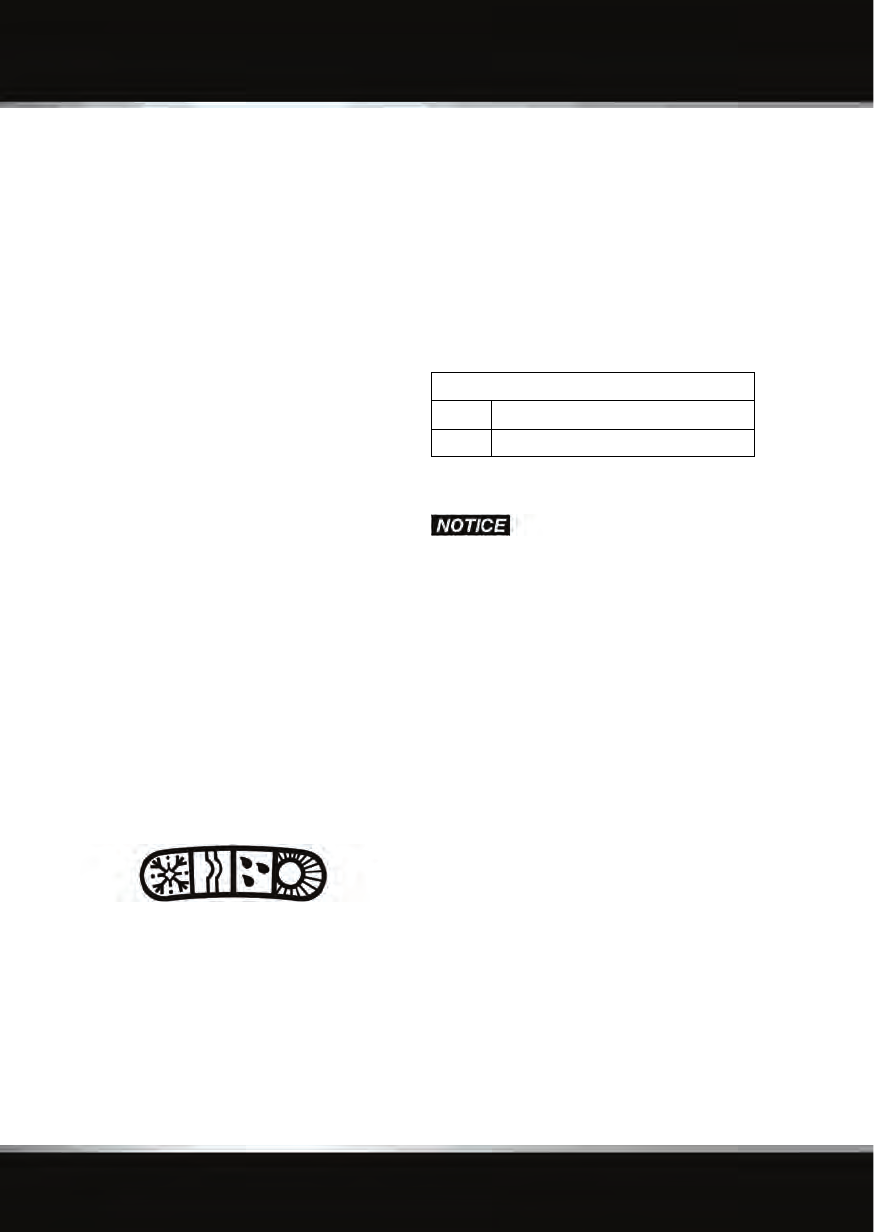
L
(FM8) SEMCON JLR OWNER GUIDE VER 1.00 NAS
LANGUAGE: english-NAS-en; MARQUE: jaguar; MODEL: XJ
Tires
180
To compensate for colder ambient
temperatures, tire pressures should be
increased by 2 psi (0.14 bar, 14 kPa) for each
20°F (10°C) decrease.
Note: Ensure that correct tire pressures are
maintained when moving to areas of differing
ambient temperature.
AVOIDING FLAT SPOTS
In order to minimize flat spotting, the tire
pressures can be increased to the maximum as
stated on the tire sidewall, for the period when
the vehicle is stationary. Tires must be returned
to the specified running pressures before
driving.
TIRE DEGRADATION
Tires degrade over time due to the effects of
ultraviolet light, extreme temperatures, high
loads, and environmental conditions. It is
recommended that all tires, including the
spare, are replaced at least every six years, but
they may require replacement more frequently.
USING WINTER TIRES
When fitted, winter tires must be fitted to all 4
wheels.
When using winter tires, do not exceed the
speed as denoted by the speed rating stated on
the sidewall of the tire.
Note: Tires with an all season icon or M+S,
have a level of winter performance and need
not be replaced by winter tires.
APPROVED WINTER TIRE SIZES
Front:
• 245/45R19 102V Pirelli Sottozero Series II,
245/40R20 99V Pirelli Sottozero Series II.
Rear:
• 275/40R19 105V Pirelli Sottozero Series II,
275/35R20 102V Pirelli Sottozero Series II.
WINTER TIRE PRESSURES
USING SNOW CHAINS
It is essential that only snow chains of the
recommended type are fitted.
Snow chains can only be fitted to rear wheels.
They should not be used on temporary use
spare wheels.
Contact your Dealer/Authorized Repairer for
details and availability of approved snow
chains.
The maximum speed when using snow chains
is 30 mph (50 km/h).
Note: When using snow chains, select
JaguarDrive Control Winter mode and switch
DSC off. DSC would reduce the deep snow
traction capability as it would limit wheel spin
to a level below that which is required to
generate maximum traction.
Up to 150 mph (240 km/h)
Front 32 psi (2.2 bar, 220 kPa)
Rear 32 psi (2.2 bar, 220 kPa)


















